Last updated: December 7, 2022
Article
Mission 66 Development at Organ Pipe Cactus National Monument
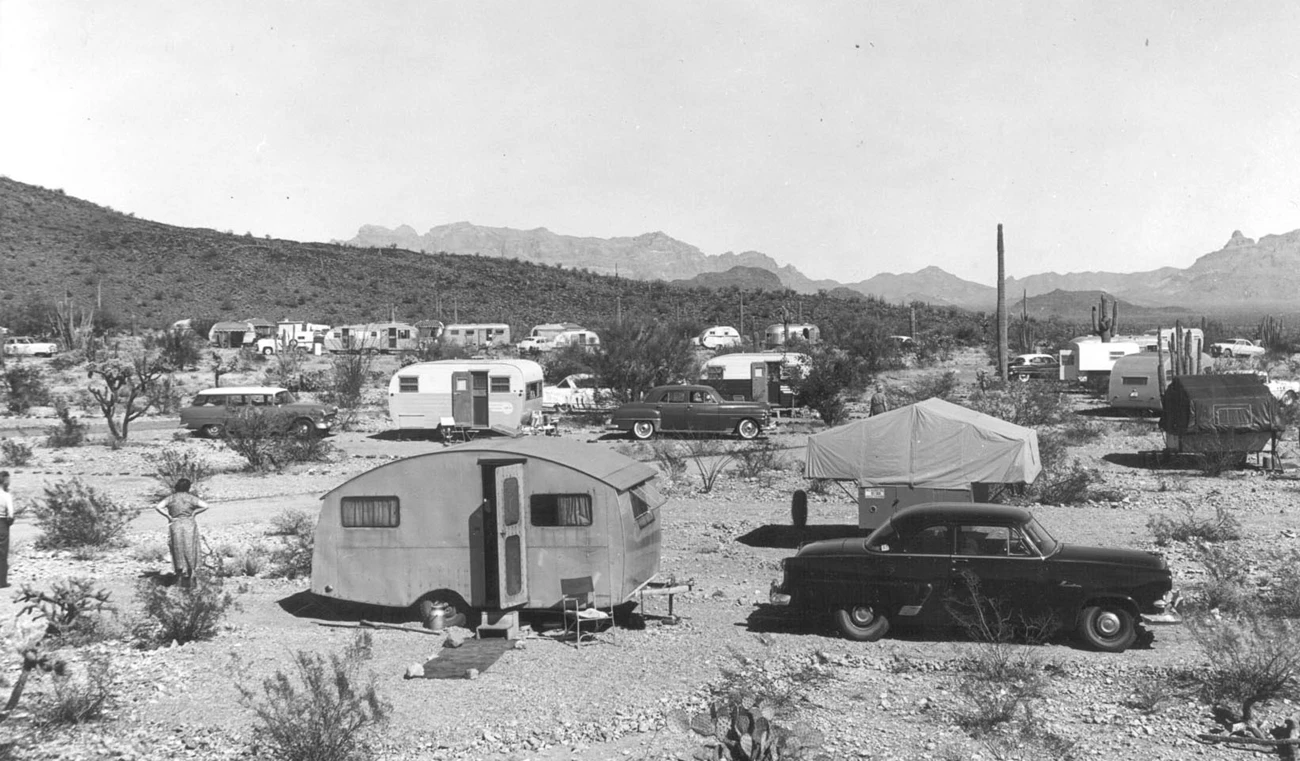
NPS / Organ Pipe Cactus National Monument archives
Organ Pipe Cactus National Monument is a large National Park Service unit located 120 miles south of the Phoenix metropolitan area in Arizona, along the international U.S.-Mexico border. The monument was established in 1937 to preserve the surrounding desert landscape for scientific study. At the time, regional NPS officials did not believe the remote area would attract much interest by way of recreational tourism, so permanent visitor services and park infrastructure initially went unfunded. It wasn’t until the 1950s and the start of the Mission 66 program that long-needed development started to shape the monument landscape. Today, Mission 66 resources at the monument account for almost the entirety of park infrastructure and include the visitor center, campground, maintenance yard, residential area, entrance sign, scenic drives, and various hiking trails.
Visitor Center at Organ Pipe Cactus National Monument
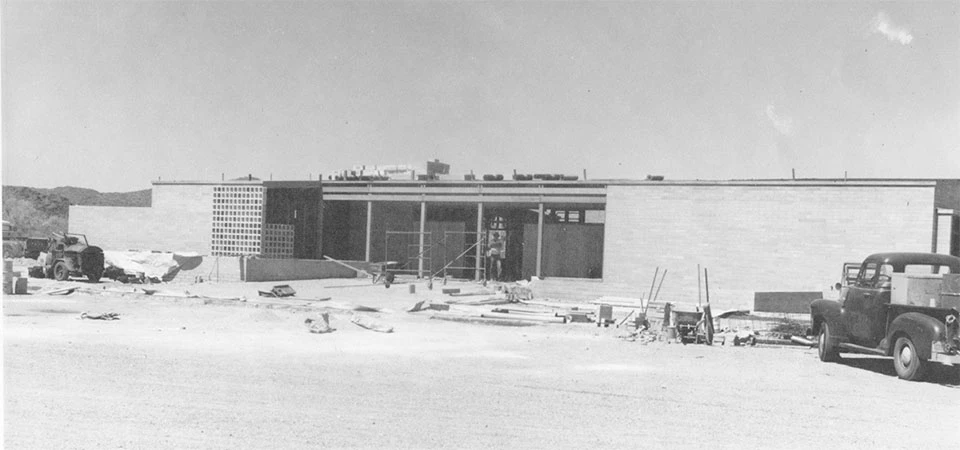
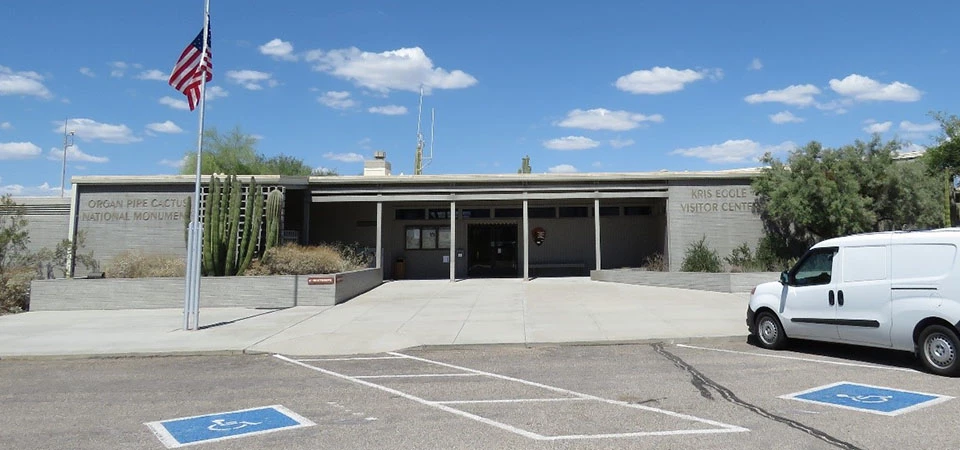
Left image
Visitor Center, during construction, photographed in the spring of 1957.
Credit: NPS
Right image
Visitor Center today, with a new sign designating the building the "Kris Eggle Visitor Center."
Credit: NPS
The main goal of the Mission 66 program was to collectively bring park units around the country up to an acceptable standard of modernization and accessibility. After World War II, national parks experienced an increase in visitation, but many did not have adequate infrastructure to support these new visitors. Mission 66 responded with increased funding to improve visitor services. For most parks, the program resulted in improvements to previously established infrastructure. At the under-developed Organ Pipe Cactus National Monument, however, the project produced an entirely new infrastructure system.
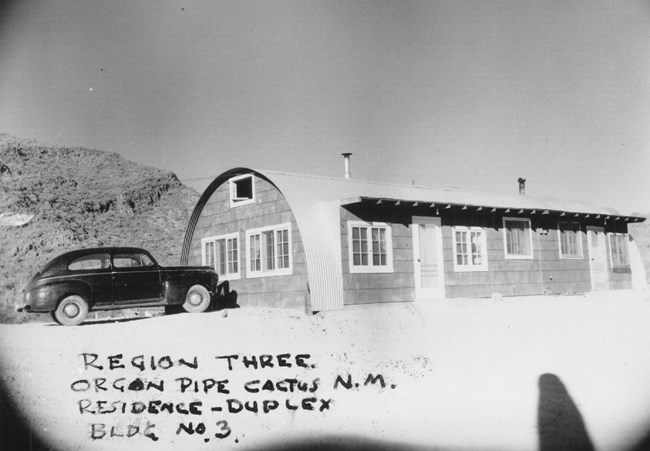
NPS / Organ Pipe Cactus National Monument archives
The new buildings, built using Mission 66 funds and following Modernist principles, replaced a motley collection of structures erected by the monument’s first superintendent. The buildings that were replaced during this period included a surplus Quonset hut requisitioned from the U.S. military in 1947, which was used as a duplex for seasonal rangers.
Development at the monument centered primarily on the headquarters and included a Cecil Doty-designed visitor center, expansive campground and associated group campground, maintenance yard, and residential area. The residential area features five prefabricated houses, unique for the Mission 66 program; only nearby Tonto National Monument has another prefabricated residence. Funding was also provided for the expansion of scenic drives, entrance and information signs, and new hiking trails.
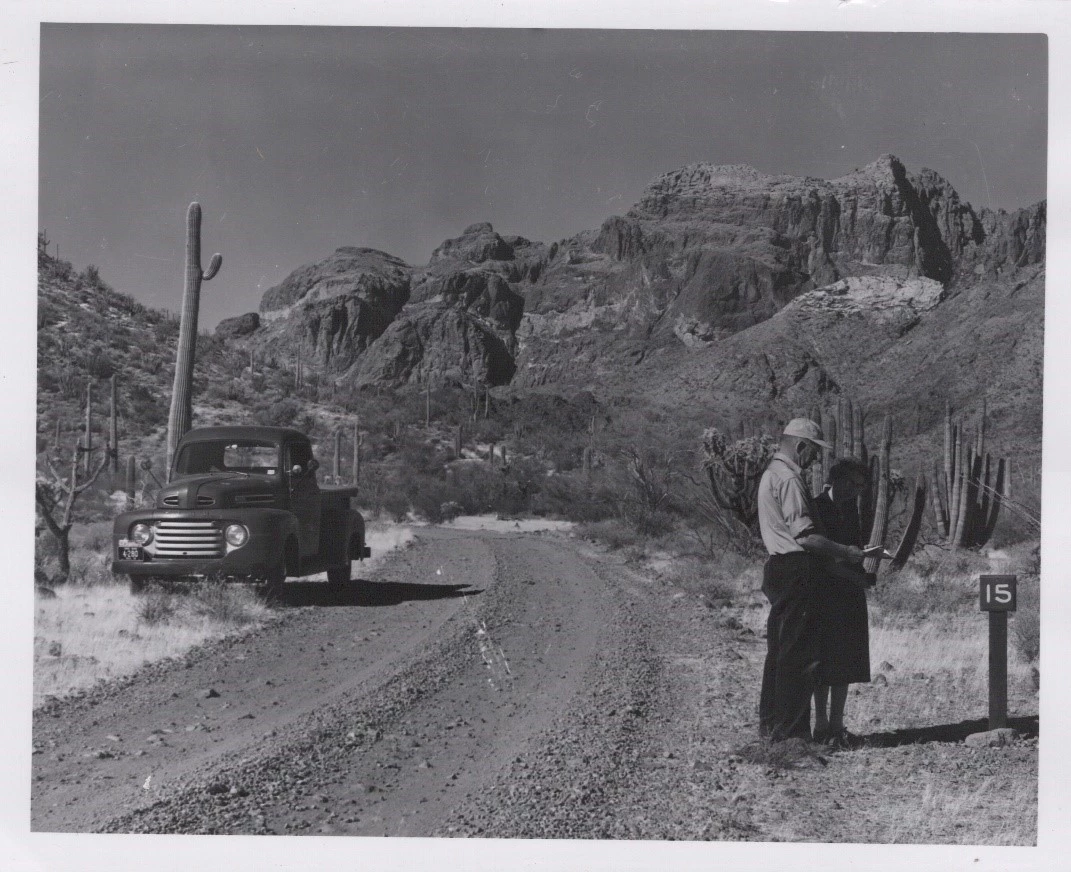
NPS / Western Archeological Conservation Center files, retrieved 13 October 2020
The Mission 66 infrastructure at Organ Pipe Cactus National Monument is exceptional among national parks in Arizona because the program resulted in parkwide changes to the monument. Additionally, a 1974 proclamation set aside 98 percent of monument lands as designated wilderness, which means it is unlikely Organ Pipe Cactus National Monument will see any further development beyond its Mission 66 projects. For these reasons, the Mission 66 era is the most significant period of development at the monument in the 84 years since it was established. With its modern improvements and infrastructure longevity, the landscape illustrates the overarching goals of the national Mission 66 program.
Quick Facts
-
Cultural Landscape Type: Designed
-
National Register Significance Level: State
-
National Register Significance Criteria: A, C
-
Period of Significance: 1951 - 1969

